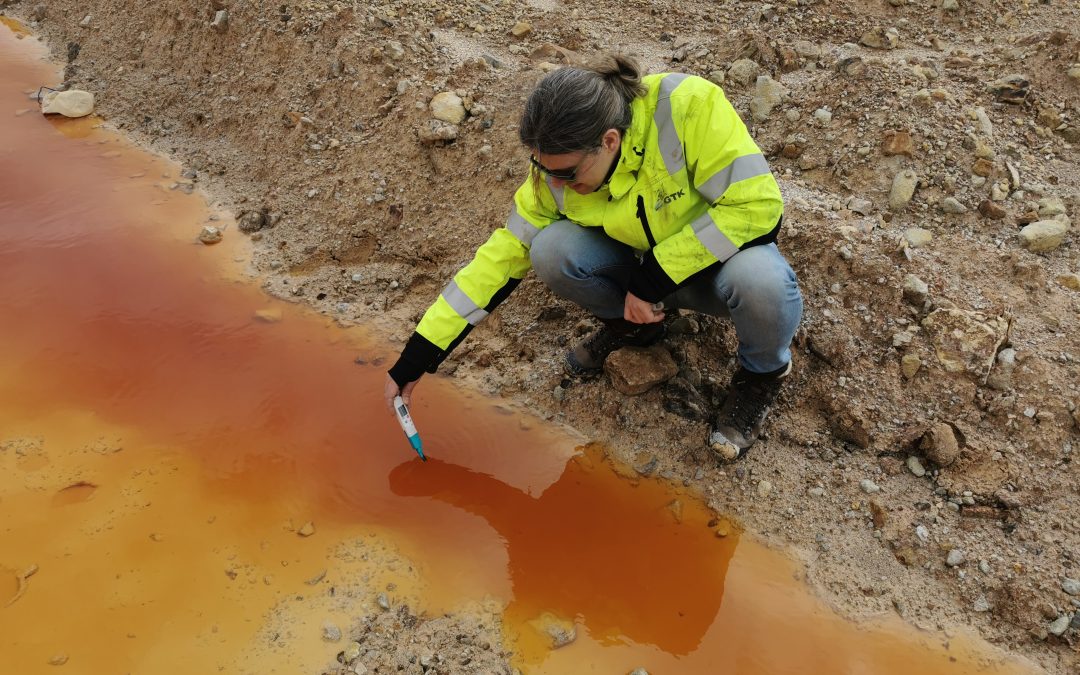Applications
Exploration
To support exploration activities, the platform will utilise EO imagery and geological data to automatically map minerals across spatial scales. Hyperspectral imagery is used for mineral prospecting, drill core analysis and secondary mineral deposit mapping to facilitate resource evaluation.
EO Mineral Mapping
EO image data is used to map spatially and spectrally the distribution of deposit relevant minerals. In this project EO imagery data will be analysed in combination with geological, geophysical, geochemical and mineralogical information to identify and map minerals on various spatial scales. Therefore, hyperspectral images from satellite, airborne and UAV are used. A standardised mapping workflow customised for the specific needs of exploration geologists to conduct automatic mineral mapping of outcrop, mine floors and walls, dams, tailings with EO data and proximal hyperspectral data is envisaged. The final output consists of a wall-to-wall coverage of the region of Interest indicating the relative abundances of the identified minerals, derived alteration as well as CRM distribution maps and uncertainty estimation.
Drill Core Mineral Mapping
Drill core mineral mapping provides an easy-to use tool for the mineral exploration and exploitation sectors to detect REEs and Li bearing minerals in hyperspectral drill core data. The spectral analysis in the VNIR-SWIR and LWIR wavelength regions allows an accurate spatial mapping of the mineralogy and mineral chemistry of the drill cores. The simultaneous mapping of both different REEs and their host minerals (carbonate, phosphate, silicate), gives added value to mineral exploration and processing activities.
Mineral Prospectivity Mapping
Mineral prospectivity mapping is carried out to point out regions or locations most favourable for the occurrence of mineral deposits. Therefore, data from ground sampling and field measurements, airborne geophysical measurements as well as satellite remote sensing data are used. An easy-to-use user GUI to produce mineral prospectivity maps for a user specified region will be implemented on the G-RAM platform allowing integration of EO-based interpretation results with other spatial geological, geophysical and geochemical datasets into prospectivity models.
Mapping Secondary Raw Materials Deposits
The Mapping of secondary raw materials deposits provides baseline support to the market, with a cadastre pilot allowing fast and spatial related detection and monitoring of secondary raw materials deposits, providing a knowledge base for further in-depth investigations. A design for a nationwide inventory of secondary material deposits will be elaborated. Tools for mineralogical and geochemical verification are developed and validated on site, using e.g. mobile XRF to determine secondary mineral phases in order to establish the chemical activity, allowing further evaluation of secondary raw materials resources.
Open Pit and TSF Dam Stability Monitoring
Open pit and tailings storage facility and dam stability monitoring is an early warning method which may help to avoid human losses and even prevent mining accidents. Open pit deformations usually lead to slope collapses that may be hazardous to the people working in the pit. Open pit slope failures cannot be prevented, but an early warning may minoritize the damage. Deformations of the tailings’ storage dams may lead to the collapse of the dam and surge of the tailings’ material to lower ground burying everything underneath it. An early warning may give time to prevent an accident.
Tailings Storage Facility Monitoring
Tailings material is usually pumped to the storage facility as a watery slurry. The mineral material settles near the end of the pipeline and a water pond is formed in the storage facility. The tailings material is kept moist to prevent dusting and oxidization. To keep the water level optimal some of the water is pumped back to the ore processing and some to the water purification.
The mining dams are rarely impermeable so mine water seeping through a dam is a common phenomenon. The seepage water usually contains metals and other harmful elements and has a negative impact on the environment. Finding the seepage helps to implement protective actions.
Volume Change Monitoring
Volume change monitoring enables accurate accounting of waste materials such as tailings and side rock heaps. This is necessary for managing the storage facilities and is one method for mine surveillance.
For the mine operations accounting the volume is necessary because when the storage is filling up another storage has to be built or raise the storage dams of the tailings’ storage facility. In any case the preparations and building have to begin before the storage is filling up.
Integrated Monitoring of Environmental Impacts
Mine sites are required to evaluate and monitor possible environmental impacts across the whole mining life cycle, through e.g. Environmental Permit procedures, Environmental Impact Assessment reports, revegetation efforts and continuous monitoring of water quality or other impacts. EO-based analysis and monitoring can provide valuable insights in complement to in situ measurements required by law.
Multitemporal and multimodal EO imagery (spaceborne and drones) will be leveraged to enable both early warning methodologies (covering the many environmental impacts on vegetation, soil and water) and habitat mapping (for baseline studies or compensation), combined into a single, streamlined, operational service.
Ground Water Level and Discharge Monitoring
InSAR-based monitoring of groundwater induced surface deformation is modelled manyfold. The spatial-temporal correlation between surface displacement and groundwater level based on the EGMS is the centre part of the AIKP. Utilising the spatial coverage of PSI data based on the EGMS to map in detail the surface displacement potentially caused by the evolution of the groundwater level in a certain mining area during several years, we assess a spatio-temporal correlation between surface displacement and groundwater level.
Using statistical methods, the relationship between observed ground motions in PSI data and changes in groundwater levels in in situ data provided by mine site operators are assessed. The results will be presented to users in an easily understandable manner, even for non-experts. This AIKP will help mine site operators and other stakeholders better manage groundwater resources and provide a convenient way to complement their existing groundwater monitoring procedures using DInSAR.
Prospecting, Reporting & Exploitation
The platform will enable the identification of promising ore occurrences and the assessment of mining tailings as potential secondary CRMs. A focus will be placed on deposits and tailings in Ukraine, using the platform’s capabilities to potentially discover new critical raw material deposits.
(GIUA)
Mineral Resources Mapping in Ukraine
The work is focused on the identification of promising ore occurrences of critical raw materials within the Ukrainian shield with different thickness of the sedimentary cover. The object of research is also the tailings of mining enterprises. Analysis of these data in conjunction with satellite images by means of artificial intelligence will allow finding new promising objects of critical raw materials. The main goal is to determine a unique set of characteristics of the geological environment and satellite images.
News & Events

Deploying Smart Sensors for Smarter Mining: Fieldwork in Roșia Poieni
On 20 May 2025, as GoldenRAM partner CUPRUMIN marked its 48th anniversary, consortium teams were on the ground at key locations, including the Roșia Poieni open pit, the Valea Șesei tailings pond, and the Valea Cuibarului secondary raw material deposit, in a mission...
Contact Us
For any inquiries or further information, please feel free to contact us using the form provided on this website. We welcome your questions and feedback.
Subscribe to our Newsletter

Follow Us
© GoldenRAM – All Rights Reserved



